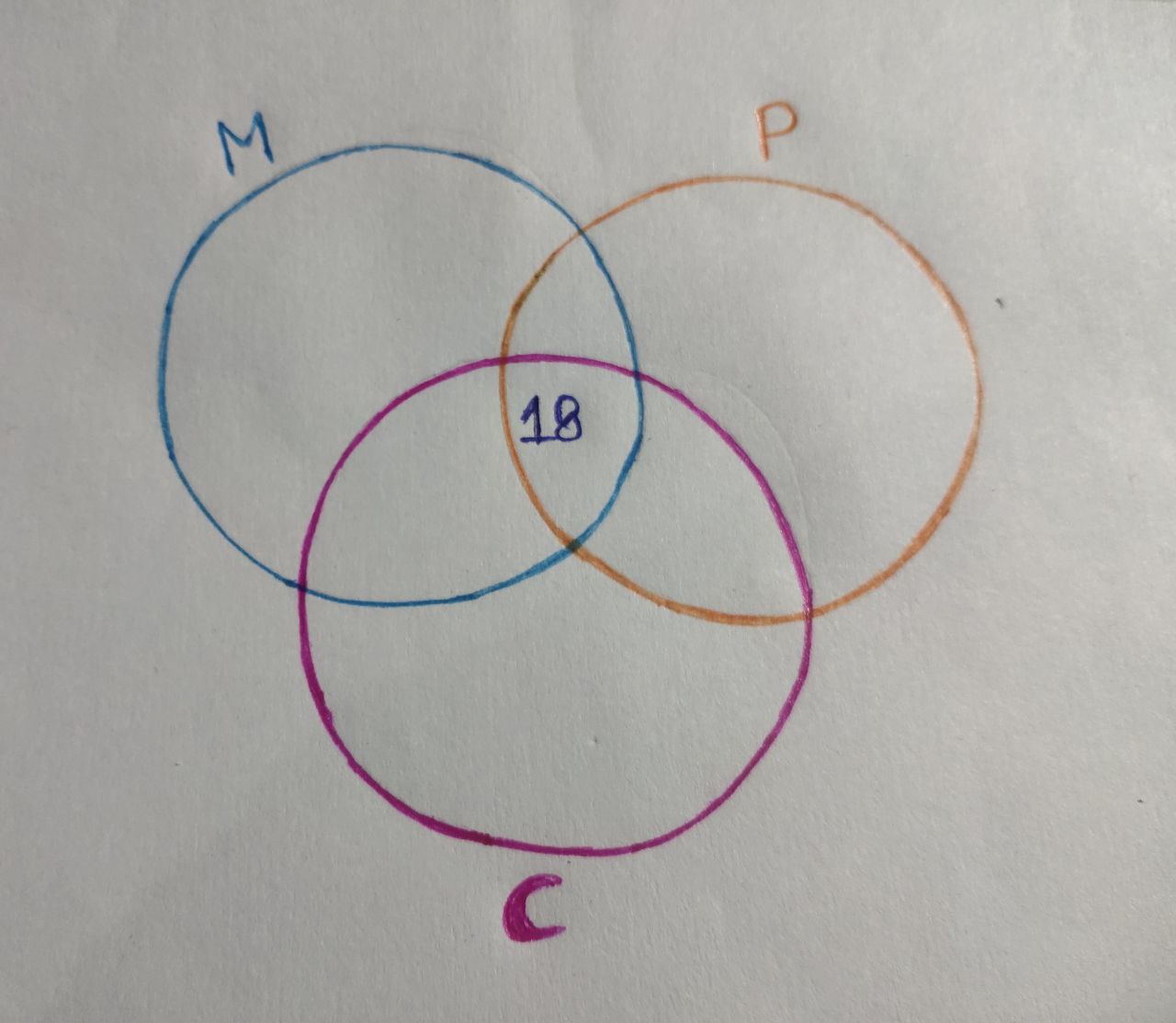Let the number of students who choose, one of the subject as mathematics, physics and chemistry be $M,P$ and $C$ respectively.

Now, $n ( M \cap P \cap C) = 18 $
And, $n ( M \cap P \cap C) + n ( M \cap P) + n( M \cap C) = 23$
$\Rightarrow 18 + n ( M \cap P) + n( M \cap C) = 23$
$\Rightarrow n ( M \cap P) + n( M \cap C) = 5 \quad \longrightarrow (1)$
And, $n ( M \cap P \cap C) + n ( P \cap M) + n( P \cap C) = 25$
$\Rightarrow 18 + n ( P \cap M) + n( P \cap C) = 25 $
$\Rightarrow n ( P \cap M) + n( P \cap C) = 7 \quad \longrightarrow (2) $
For smallest number of students. Who choose chemistry as one of subject in equation $(1)$ and $(2) , n(M \cap P)$ must be maximum and $n(M \cap C), n(P \cap C)$ must be non-negative that means, $n(M \cap C) \geq 0, n(P \cap C) \geq 0. $
The maximum value of $n(M \cap P)$ in equation $(1)$ and $(2)$ is $5.$
Now, from equation $(1),$
$ n(M \cap P) + n(M \cap C) = 5$
$ \Rightarrow 5 + n(M \cap C) = 5$
$ \Rightarrow \boxed{ n(M \cap C) = 0}$
And, from equation $(2),$
$ n(M \cap P) + n(P \cap C) = 7$
$ \Rightarrow 5 + n(P \cap C) = 7$
$ \Rightarrow \boxed{ n(P \cap C) = 2 }$
$\therefore$ The smallest possible number of students who could choose chemistry as one of their subject $ = n ( M \cap P \cap C) + n ( P \cap C) + n( M \cap C) = 18 + 2 + 0 = 20.$
Correct Answer $: \text{A}$